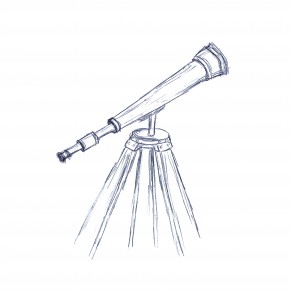THURSDAY, 1 OCTOBER 2009
In the recent star trek movie, a flash-forward shows an older and wiser Spock embarking on a mission to save planet Romulus from a deadly supernova explosion. His solution is the mysterious ‘red matter’, a substance capable of creating a black hole that would absorb the impact of the exploding star.It is clear from this inaccurate depiction in J.J. Abrams’ blockbuster that, while the nature of stars and planets are widely known, audiences are less familiar with black holes and the material that surrounds them which allows us to detect these otherwise invisible objects.
When a massive star has burnt all the light elements in its core, it reaches the end of its life cycle. The end is not peaceful. The collapse of the nucleus generates a shock wave that causes the external layers of the star to burst into a violent supernova explosion. The centre collapses into an extremely dense core, called a neutron star. However, if the star is heavy enough, the core will keep on shrinking until it becomes a black hole.
Observational astronomers usually detect and study objects using the light emitted or reflected from their surface. But in the case of black holes, light can not escape from them. So how do we know that they exist? In the same way that one can perceive a person completely covered in bed because of how their body shapes the sheets, a black hole can be detected by studying the matter surrounding it.
After a supernova explosion, remaining gas and dust swirls around the black hole. The gas and dust are close enough to feel the gravitational attraction but far away enough to resist being completely sucked in. This matter eventually settles down in a disc-like shape that orbits the central object, creating an ‘accretion disc’. These messy structures are crucial for scientists, as they shed light on the otherwise invisible dark bodies.
Unlike the bodies they surround, accretion discs are neither black nor nearly invisible. Light is reflected and emitted from them, providing essential and palpable information about the vicinity of black holes. As the matter in the disc gets closer and closer to the central object, slowly being transported inwards, it heats up and releases energy, in the form of X-rays. Astronomers can detect this highly energetic radiation, and provided they have an idea of how heavy the object is, they know they are in presence of an extremely compact body; just like one can see the undulations in bed sheets.
But your eyes can mislead you into believing that a person is underneath the sheets when it is really a pile of pillows. Neutron stars are like the pile of pillows. With a huge mass and small volume, these compact objects have a gravitational pull almost as strong as that of a black hole and affect their surroundings in a similar way to their dark siblings. So how do we tell the difference?
Einstein’s theory of general relativity predicts the existence of black holes and brings about an assortment of associated concepts which can help distinguish between neutron stars and black holes. An example is the notion of an event horizon, a region inside which nothing, not even light, can escape.
Further away from the hole lies another important boundary, the marginally stable orbit, inside which matter can not maintain stable orbits (unlike, for example, the planets of the solar system, which have stable orbits). Instead, it rapidly spirals around the central object, being pulled in until it eventually reaches the event horizon and disappears into the black hole. Therefore, an accretion disc around a black hole does not reach the compact object but has an ‘inner edge’ as the marginally stable orbit.
Neutron stars have a slightly weaker gravitational pull and, as a consequence, their accretion discs can extend to the surface of the star and interact with it. Since the result of such interplay can be detected with modern telescopes, astronomers are able to determine whether the object under investigation is a neutron star or a black hole; they can distinguish between a pile of pillows and a body underneath the bed sheets.
But this is not where the story ends. In the same way that one can tell if a person completely covered by sheets is fat or thin, tall or short, one can use accretion discs or orbiting stars to study the properties of black holes. While numerous quantities (mass, radius, luminosity, to name a few) are required to characterise a star, black holes can be fully described by only two parameters: mass and spin.
Black holes with different masses have distinct effects on bodies that orbit them, even if at large distances. Indeed, the difference is so evident that a closer look is not essential; accretion discs are not necessary to determine how heavy the black hole is. Simply by measuring the orbital period and velocity of a circulating star, astronomers can find a good approximation for the mass of the black hole.
Spin is much more complicated to measure than mass because its effects are subtle and only noticeable extremely close to the black hole. In fact, fast and slow spinning black holes both influence an orbiting star in exactly the same way. The difference can only be noticed in the accretion disc, whose inner edge is closer to the hole if that hole is spinning faster. Therefore, astronomers can use the diameter of the marginally stable orbit, to estimate how fast the black hole rotates; the smaller the diameter, the larger the spin.
Although often overlooked alongside the mysterious objects they orbit, black hole accretion discs are crucial to the labelling and study of their central bodies. They are the structures that allow scientists to design accurate models of the vicinity of compact objects.
Bárbara Ferreira is a PhD student in the Department of Applied Mathematics and Theoretical Physics



